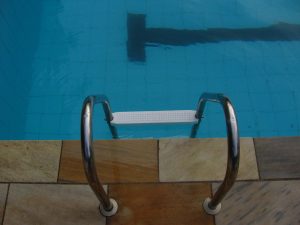 Whether you are swimming in a pool at your San Diego home or are visiting a neighbor’s house, do you need to be worried about your child’s safety as well as your own? According to a recent article in U.S. News & World Report, swimming pools can become death traps more frequently than most of us would like to believe, especially for young children. As that article explains, around 18 millions homes in the U.S. currently have swimming pools, but drowning is actually the leading cause of accidental death among children 1 to 4 years old. As the article emphasizes, a majority of those unintentional deaths occur in home swimming pools.
Whether you are swimming in a pool at your San Diego home or are visiting a neighbor’s house, do you need to be worried about your child’s safety as well as your own? According to a recent article in U.S. News & World Report, swimming pools can become death traps more frequently than most of us would like to believe, especially for young children. As that article explains, around 18 millions homes in the U.S. currently have swimming pools, but drowning is actually the leading cause of accidental death among children 1 to 4 years old. As the article emphasizes, a majority of those unintentional deaths occur in home swimming pools.
While kids under the age of four are at a higher risk of drowning than children in other age groups, it is important to remember that drowning can result in the death of anyone, at any age. For kids under the age of 15, drowning is the second-leading cause of accidental death. As such, it is important to take precautions to prevent your pool from becoming a death trap, as the article warns.
Supervision and Swimming Lessons for Your Kids
The first and most important aspect of pool safety is making sure that your children are supervised at all times when they are in the pool. You should not take your eyes off the pool—even for a minute or two—to read a magazine or to check your email on your smartphone. It takes a short time for a child to drown, and parents need to be aware that supervision is key to preventing drowning accidents in home pools.
Almost as important as adult supervision, you should ensure that your kids know how to swim. Sign your children up for swimming lessons early on and be sure that they know what to do when a water situation becomes dangerous. While your kids are taking swimming lessons, you should consider learning CPR. In the event that a child does have a near-drowning incident in or around your pool, you can have the tools to save a life.
Safeguard the Pool Area
Supervision and swimming skills are key to preventing drowning deaths. At the same time, however, it is essential for parents with home pools to take steps to keep the pool area safe for kids. The article recommends the following tips:
- Completely fence in your pool, ideally using fence of at least six feet in height and three feet away from the pool so that it can be safely scaled without falling in. Not just any fencing will do, either. You should use fencing that does not have any “horizontal footholds of grips that allow kids to climb it.” Additionally, the fence should not have vertical slats that are more than four inches apart, or else a child may be able to slip through those slats.
- Install a gate to your pool area that has “self-closing spring hinges and a self-locking latch that is well out of reach” of children, typically at least five feet from the ground.
- Remove any furniture or other items that kids could use to scale your pool fence, including but not limited to: low-hanging tree branches, chairs, tables, and ladders.
If your child got hurt in a pool accident, you may be able to file a claim for compensation. An experienced San Diego drowning accident attorney can discuss your options with you. Contact the Walton Law Firm today for more information.
See Related Blog Posts:
Learning More About Dry Drowning and Secondary Drowning
Link Between Drowning Accidents and California Drought
(image courtesy of Matias Romero)
 North County San Diego Injury Lawyers
North County San Diego Injury Lawyers








